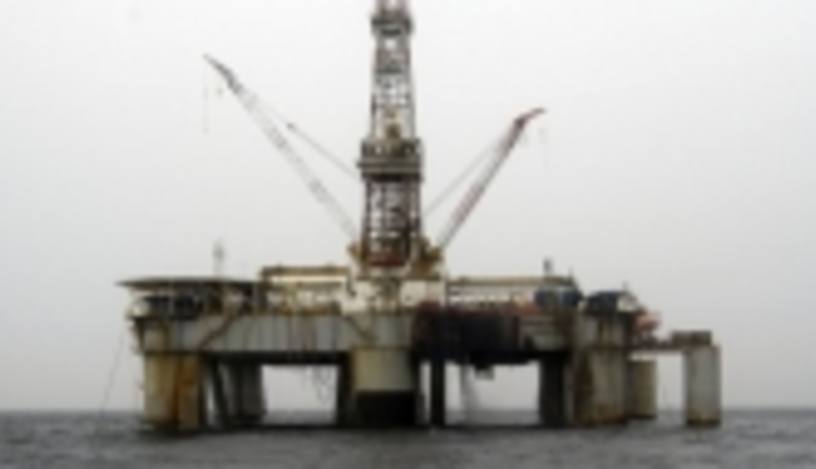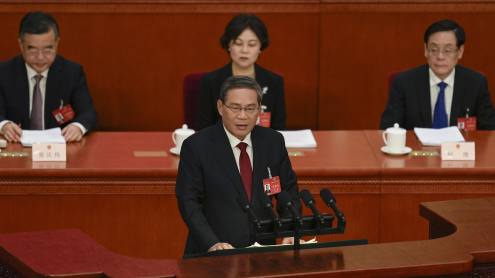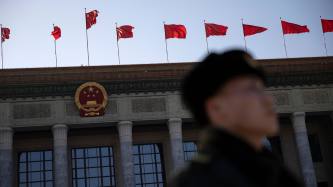Angola has been producing oil for more than half a century, but the discovery of vast oil reserves off the country’s Atlantic coast has introduced new momentum to an industry seen as key to the country’s economy. Oil accounts for 97% of the country's exports, dwarfing earnings from diamonds and coffee. Angola produces about 1.7 million barrels of oil a day, a notable proportion of the 31 million barrels a day produced by the Organisation of the Petroleum Exporting Countries (OPEC).
Editor's choice
Angola’s acceptance of membership into OPEC in 2007 represented a significant milestone for the country, which is still recovering from a 27-year civil war that only ended in 2002. Now, with former National Union for the Total Independence of Angola (Unita) rebels acting as minority partners in the 33-year government led by the People's Movement for the Liberation of Angola and president José Eduardo dos Santos, the stage is set for a period of sustained economy growth, fuelled by exports of oil. However, for those expectations to become reality Angola must realise the potential of the deep-water reserves in the salt basins off its coast.
Ripple effect
The potential of Angola's offshore reserves were first realised in 2007, when pre-salt deposits were discovered in the Santos basin, situated in the deep water off the coast of Brazil. Angola was originally part of the same land mass as Brazil, and the nature of the rift movements that caused the two countries to split and the resulting reservoirs of hydrocarbons that were known to have formed in between them suggested that the same kind of pre-salt deposits found in the Santos basin may be present in offshore Angola.
Until the discovery of oil in Brazil, exploration off the Angola coast was restricted to the shallow waters, leaving the offshore basin relatively unexplored. Now that the Santos basin is regarded as one of the most important resources to have been opened by exploration in the past decade – with just four blocks having the potential to yield 20 billion barrels of recoverable oil, according to Deutsche Bank – the Angolan government has extended licences into the deep water, giving oil companies the right to drill into the deposits trapped under layers of salt below the ocean floor.
Given the relative calm in the country and low geopolitical risks relative to some other oil producing countries, [Angola is] in a position now where there is a great opportunity
As an example of the geography of the drill sites, the Lula field in the Santos basin is situated about 2000 metres below the water and a further 5000 metres below a layer of salt.
“Until recently, Angolan exploration was focused on shallow post-salt sediments, further north in the lower Congo basin,” says Tom Ziegler, vice-president at Norway-based Petroleum Geo-Services. “The large discoveries in Brazil have changed that, and while it is difficult to quantify the pre-salt potential offshore in Angola, it is likely to be significant.”
In the deep end
One company to have tasted early success in Angola's deep water is Cobalt International Energy, which in February 2012 said that tests under the Kwanza basin off the Angolan coast had exceeded expectations and increased the company's confidence in its west African pre-salt exploration prospects. Cobalt, whose main stakeholder is Goldman Sachs, said that tests at its Cameia-1 well in block 21 confirmed the presence of a 360-metre "gross continuous oil column", which might produce up to 20,000 barrels of oil a day.
"Cameia-1 is an extraordinary success. The results have exceeded our pre-drill expectations and have increased our confidence in our entire west Africa pre-salt exploration inventory," says Cobalt chief executive Joseph Bryant.
The potential in the Kwanza basin has attracted attention from most of the world’s leading oil producers, and at auctions in December 2011, seven firms won licences to operate pre-salt blocks. These firms were France’s Total, Spain’s Repsol and the UK’s BP, as well as Denmark’s Maersk, Norwegian firm Statoil, Italy’s ENI and US-based ConocoPhilips. BP has been particularly active, gaining access to five new offshore exploration and production blocks, giving it a total interest of nine blocks with an acreage of 30,842 square kilometres.
“By the end of 2014, we plan to start up 15 major projects. Those new projects will be in Angola, the North Sea, the US Gulf of Mexico and Azerbaijan, and they will deliver twice the operating margin of our entire 2011 portfolio,” says BP's CEO, Bob Dudley, highlighting the importance of the Angolian reserves to the company's future success.
Smart moves
As Angola seeks to maximise the benefits of these oil reserves, it has been assiduous in making sure the oil majors share the potential bounties of the oil finds. Although no details have been disclosed, research firm Wood Mackenzie has suggested that the signature bonuses for participating in the recent licence round could have been as high as $250m per block.
The Angolan authorities have also been astute in applying taxation structures to the oil industry. Whereas Brazil taxes the oil companies on the basis of production levels, Angola imposes a sliding scale of taxes indexed to profitability, setting itself up for higher rewards. According to an estimate by Deutsche Bank, Angolan pre-salt fields offer about 50% less profit for the oil companies compared to their Brazilian counterparts.
Responsible for Angola’s impressive manoeuvering in contract negotiations is state-owned Sociedade Nacional de Petroleos de Angola (Sonangol), the largest corporate in Angola and one of the biggest corporate entities in Africa. Sonangol was formed in 1976 – following Angola's proclamation of independence in 1975 – in order to manage the country's oil assets. It is involved in almost every aspect of the oil industry from prospecting, researching and production to up-stream activities including storage, transportation and refining. It also has a diversified portfolio of non-energy interests, such as insurance, banking and telecommunications, worth about $5.2bn according to Luanda-based financial services group Imara Securities Angola.
[BP's] new projects will be in Angola, the North Sea, the US Gulf of Mexico and Azerbaijan, and they will deliver twice the operating margin of our entire 2011 portfolio
“Sonangol is in effect Angola’s sovereign wealth fund and any big investment is made through the company,” says Imara's chief executive, Anthony Lopes-Pinto. “The company is managed to international standards and has a stake in almost every part of the Angolan economy.”
One sign of Sonangol's influence is the fact that the company’s chairman, Manuel Vincente, accepted a position as minister of state for economic coordination in 2012, and is rumoured to be in line for further promotion, says Mr Lopes-Pinto.
Despite its diverse interests, the mainstay of Sonangol’s financial firepower is the oil industry, and the company’s performance is closely aligned to the price of oil, as is the performance of Angola's wider economy. Group turnover in 2010 increased to $22.1bn in 2010, compared with $13.1bn in 2009, almost mirroring movements in the average price across the OPEC oil basket. Earnings before deductions for 2010 were $3.3bn, representing an earnings before interest, taxes, depreciation and amortisation margin of about 15%.
Price and production
The prospects of both Angola and Sonangol depend on the price of oil and the performance of the newly auctioned blocks in the Kwanza basin. Crude oil production has declined to about 1.65 million barrels a day in 2012, from a high of 1.8 million barrels a day. That has been partly due to technical problems at BP’s concession in block 18 – Greater Plutonio. BP cut production in 2011 to 123,000 barrels a day, from a high of 170,000 barrels a day in 2010.
“There was a problem with the high-pressure gas cooling systems, which had restricted operations since September 2010,” says Robert Wine, a spokesman for BP. “In the end we went for a 40-day planned maintenance shut-down and complex replacement project which was safely completed in June 2011.”
Although OPEC has imposed a nominal production cap on Angola of about 1.7 million barrels a day, there are few that believe that this number is set in stone, and if the pre-salt fields prove as lucrative as is hoped, production could quickly rise to as much as 3 million barrels a day by 2015, according to Imara.
Oil reserves in Angola at the end of 2010 were about 13.5 billion barrels, according to Imara. At current prices they would be valued at about $1600bn, and translate to about 18 years of production at 2 million barrels a day. Of course with the new deep-water fields almost entirely unexplored, those numbers could rise substantially.
“With the level of ongoing investments in the deep water it is relatively easy to see that they could quite quickly add another 500,000 barrels a day,” says Harry Tchilinguirian, London-based head of commodity markets strategy at BNP Paribas “Given the relative calm in the country and low geopolitical risks relative to some other oil producing countries, [Angola is] in a position now where there is a great opportunity.”
Social challenges
The Arab Spring protests in north Africa and the Middle East have raised speculation that the Angolan government may be susceptible to similar popular uprisings. However, despite the ruling party’s iron grip on power, there is little sign of widespread appetite for political change.
“The ruling party is very dominant but it has support, which means we are not concerned about political instability,” says one analyst. “At the moment the opposition Unita party has little support and is not in a position to effect meaningful change.”
In the 10 years since the end of the civil war, president Mr dos Santos has committed the government to addressing the social and economic challenges that face Angola, which remains one of the least developed countries in sub-Saharan Africa following the destructive 30-year civil war. The government’s ability to improve the country's infrastructure and wider economy is almost entirely reliant on the fortunes of the oil industry, as illustrated by fluctuations in the country's gross domestic product (GDP).
“The economy grew as much as 21% a year from 2005 to 2007, whereas in 2009 growth was just 2.4%, which shows how susceptible it is to the price of oil,” says Ridle Markus, an economist at Absa Capital in Johannesburg. “[In 2011], growth was 3% to 4% but we expect it to pick more meaningfully [in 2012] and reach close to 9%.”
The currency is also closely aligned to oil prices, and the kwanza fell from 75 to the dollar in 2007 to as low as 95 to the dollar in 2009, pushing up the price of imports, dominated by food and consumer goods. Angola is sub-Saharan Africa’s third largest economy behind South Africa and Nigeria, with a nominal GDP of about $100bn. However, such was the impact of the drop in oil prices in 2009 that the International Monetary Fund was required to offer $1.3bn of assistance.
One of the key players in the development of the country’s infrastructure is its biggest trading partner China, which has helped build roads, schools and hospitals in Angola. However, some are concerned that without China’s input relatively little would have been achieved.
“One of the biggest challenges for the government is to make sure the money coming out of the oil industry and activities of Sonangol feed down to benefit the wider population,” says Mr Markus. “Even though we have seen reforms aimed at that, they have so far only achieved limited success.”
Focus on the future
In a bid to connect oil wealth to the health of the Angolan economy, recent legislation has decreed that the major oil companies must move all of their transactions through the local banking sector within the next one to two years. It is hoped the move will increase liquidity in the banking system and encourage use of the local currency as a means of payment in an economy that remains highly dollarised.
While the government attempts to make changes on the ground, probably the most important factor in the potential for future economic growth remains the price of oil, and to a large extent this may be determined by global economic growth. However, troubles elsewhere in the world, particular in Iran, may play to Angola’s advantage.
“We are actually bullish on the oil price outlook and we expect [crude oil] prices to rise from about $120 a barrel [in the first quarter of 2012] to as high as $135 in the third quarter, before falling back slightly to about $130 a barrel,” says Mike Wittner, managing director and head of commodities research for the Americas at Société Générale. “We expect that the sanctions on Iran will continue to bite and lead to a decrease in exports, and while [Saudi Arabia] will make up the difference the net impact is certain to be tighter spare capacity that will be reflected in prices.”
Société Générale predicts fairly weak economic growth in the US and Europe in 2012, but expects that will be offset by faster growth in emerging markets and a soft landing in China, which it says will grow by 8.1%. “We are forecasting about 0.7 million barrels a day of oil demand growth, but with supply disruptions in Iran, Sudan, Syria and Yemen, the bottom line is that crude stocks will remain tight.” From an Angolan point of view, that can only be good news.












